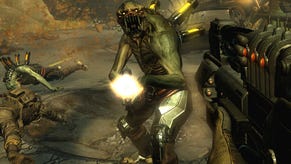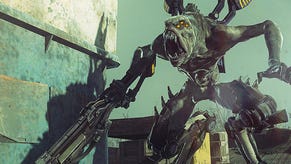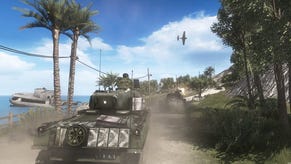Digital Foundry vs. Resistance 3
Vive!
A couple of weeks back, we received our copy of the Battle: Los Angeles Blu-ray. In common with many, the only reason we bought this tragically poor movie was because of the inclusion of a download code for the Resistance 3 demo. The chance to get an early peek at the Insomniac's latest work was too tempting to pass up - we'd left E3 unconvinced about the game's merits and felt certain that more hands-on time would present a much more positive experience.
Perhaps we should have saved our cash: within days a content-heavy preview build of the game arrived via Sony, featuring a near-complete slice of gameplay from its initial intro all the way through to the segment of action shown at the Sony E3 press conference: 16GB of on-disc data that translated into a good couple of hours' blasting that transformed our opinion of the game.
Resistance 3 probably isn't the most technologically advanced shooter we'll see this year. In terms of the overall package it's going to be difficult to dislodge Killzone 3 or the forthcoming Battlefield 3, and as you might expect it's not a 60FPS experience like Modern Warfare 3. But what it does do well is to combine a series of impressive tech upgrades with an element that doesn't tend to get the attention it deserves in this sector of the games market: imagination.
Resistance veterans will know what we're talking about: Insomniac has a knack of delivering excellent weapon designs which make pitch-perfect use of the game's sci-fi background. The classic Bullseye rifle with its tag ammo that allows you to "fire and forget" knowing you're hitting the target, the Magnum with its remote detonation shells, and of course the shield-deploying, fire-through-walls hilarity of the mighty Auger. None of these guns could exist in Battlefield or Call of Duty, but in an alien-occupied Earth anything's possible - and there's a pleasing juxtaposition between the advanced Chimera tech and the lo-fi, homemade tools of the eponymous Resistance.
These classic weapons are now joined by a range of newcomers we won't spoil for you, all of them allowing for upgrades, adding further to player experimentation and strategy. In an age where FPS shooters toss dozens or even hundreds of different weapons at you in an almost disposable manner, Resistance works because each gun is a carefully crafted tool and much of the fun is derived from figuring out the full extent of their capabilities.
The fun factor of Resistance 3 isn't just down to the imaginative design, though, because the control system is good too. The game isn't exactly a twitch shooter in the style of Call of Duty, but the pad response is best described as "light but right" - reminiscent of Killzone 3 in this regard. Input latency measurement came in at 116ms, the same as the Guerrilla game, though frame-rate drops seemed to take their toll on response depending on the hit to performance.
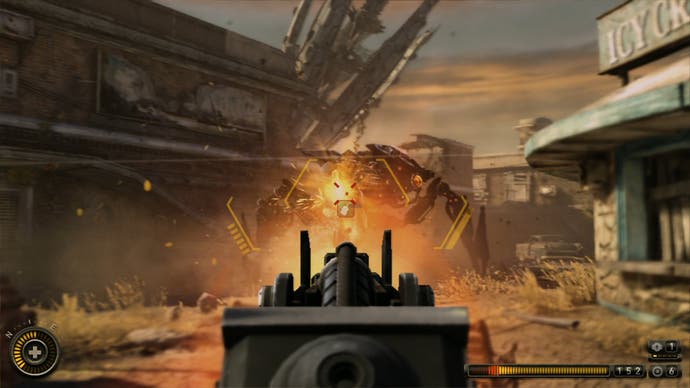

The engine upgrades we see in Resistance 3 serve a combination of purposes, but perhaps the most important element is in how they enhance the actual gameplay. The physics engine ensures that all the fun you've having with the weaponry translates into suitably appropriate action on-screen, with Battlefield/Frostbite levels of destruction mostly utilised in a series of standout, interactive set-pieces. The impact of your weaponry on both environment and Chimera is appropriately impressive, and there's a real sense of collateral damage to the gunplay as props go flying in the carnage. Compare and contrast to Medal of Honor, where a lamp stays rooted to a table even after a direct RPG hit.
Purely visual improvements to the Insomniac engine come across as a hybrid of Killzone 3 and Metro 2033. There's a wealth of intricate detailing in all aspects of the artwork and a lot of dynamic lights and shadow in play. Ambient occlusion is also well implemented, adding a further layer of depth to the environments, and there's a wealth of post-processing effects in play, including some beautiful light shafts/god-rays.
Resistance 3 doesn't skimp on alpha effects either. Fog, smoke and dust are all well utilised in adding to the realism of the scene, and come into their own during the pitched combat and the destruction-based set-pieces. Camera and object-based motion blur are also par for the course - something of a standard in all of Sony's key first-party titles.

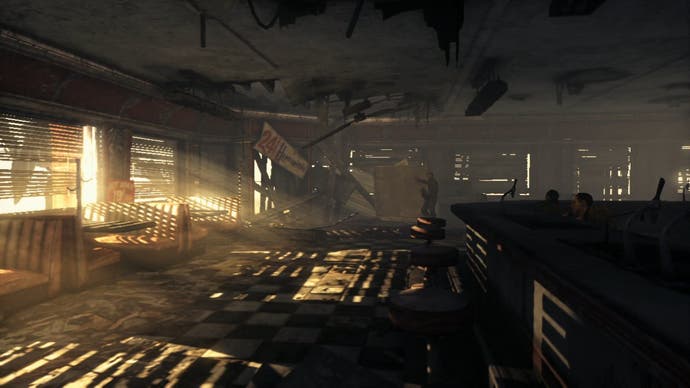
Perhaps inevitably, there is a trade-off in the implementation of all these new effects. In the Battle: Los Angeles playable demo, we see that native resolution has dropped significantly, down from the 1280x704 of Resistance 2 to a mere 960x704 - a 25 per cent drop - and nothing from the much more recent preview code suggests that this has changed, suggesting it's a lock.
This presents a number of issues to the image quality. Firstly, there's an unavoidable blur added during the upscaling process. Similar to Killzone 2, there is a sense that blur is actually an intended component of the overall art style - after all, this is a dark, grungy, grim world that Insomniac is generating. However, the sub-HD resolution makes intricate sub-pixel detail stand out and look quite ugly in some cases, so anything along the lines of trees or chain fences suffers owing to the resolution drop.
In line with previous Resistance games, the RSX chip's quincunx anti-aliasing (QAA) is in play. However, the coverage seems to be blitzed by the post-process effects, so within minutes of the game starting you will be noticing some pretty blatant aliasing that is only emphasised by the upscaling. While the QAA is definitely there, it's hard to find in many cases and the impression you get from playing the game is that there's little anti-aliasing in evidence at all in most cases.



